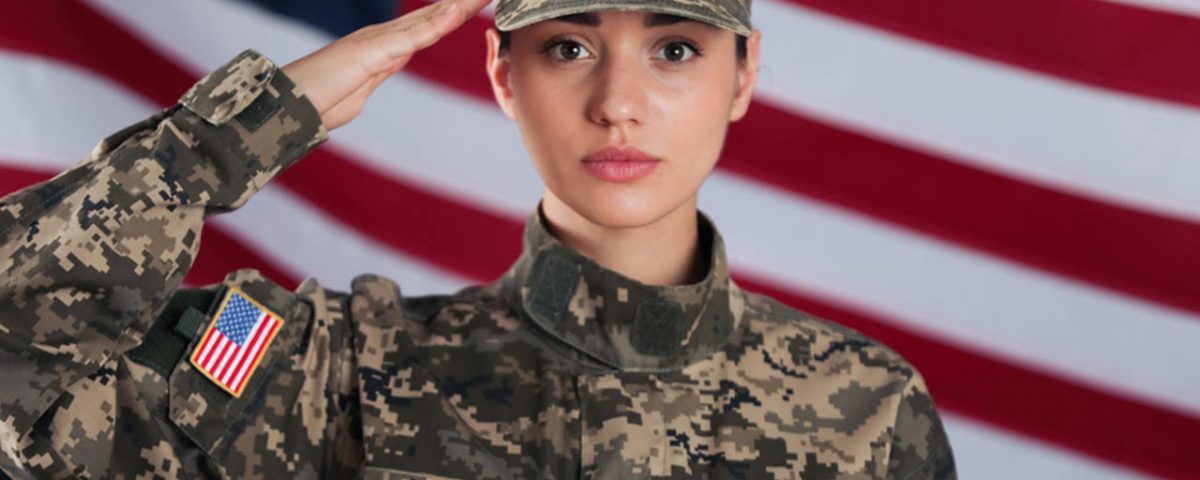Women’s History Month was first observed in March of 1987 and is now celebrated annually. The purpose of this national holiday is to reflect on the important contributions women have made since the beginning of U.S. history. From Sacagawea to Eleanor Roosevelt, we are going to discuss this important annual holiday and how it relates to women of the military who are currently serving, as well as our retired female veterans.
Background of Women’s History Month
First celebrated for only a week, Women’s History Month was created in a school district of Sonoma, California, in 1978. It was there that dozens of presentations were given out, hundreds of students wrote essays on the topic, and a parade was held to honor women and their contributions to society. The idea quickly grew to other communities and in 1980, President Jimmy Carter delivered a presidential proclamation officially naming the week of March 8th as Women’s History Week.
Congress followed shortly after by passing a resolution to celebrate the week nationally. Then, in 1986, the National Women’s History Project successfully convinced Congress to expand the holiday to the entire month of March.
Women in Military Service
Although women are a major part of the U.S. Armed Forces, it wasn’t always that way. In fact, women of the military have only been allowed since 1948, when President Harry S. Truman signed the Women's Armed Services Integration Act into law. In true women’s fashion, that didn’t stop them.
During the Revolutionary War, wives, sisters, and mothers joined their loved ones to serve alongside them, assisting them in taking care of wounds, fixing clothing, cooking, cleaning, and above all, boosting morale for the male soldiers. By the time of the Civil War, there were 20,000 women in military service in America.2
These incredible women were growing crops to feed Union troops, cooking in Army camps, sewing, laundering uniforms and blankets, and organizing donations through fundraising campaigns. During the Civil War, many women disguised themselves as men as well. Historians estimate that about 1,000 women dressed up as men to serve in the Civil War. In World War I, women, who could not yet vote, were allowed to serve in the U.S. military.
Today, over 200,000 women serve in the military in several roles and positions. Before 2001, military jobs for women did not include anything involving combat. For example, the U.S. Army and Marine Corps banned them from nearly 220,000 jobs.8
This meant that women in infantry, artillery, and armored divisions were not a possibility. After the war in Afghanistan and Iraq, however, this changed, and American women were dying for their country. In 2015, the ban on women in combat was officially lifted, and women were able to serve their country how they wanted to. This also helped them rank efficiently in their branch of the military. Sexism in the military is something that continues to impact both men and women who serve. This is especially concerning when considering the number of females working in this highly male-dominated culture.
Effects of the Military on Women
Despite the many hurdles that women conquered in getting to where they are now in the military, life as a female soldier doesn’t come without its struggles. Research has shown that women feel discouraged by society, family, and recruiters to join the military or enter certain job categories. The number of women leaving the Armed Forces is nearly 30% higher than that of men.3
But why are women leaving the Armed Forces? How do the Armed forces affect women? Factors for their separation from the military include their work schedules, organizational culture, family planning, dependent care, and deployments, among other things.
One example explains how single servicewomen tend to stay in the military while women who get married or are pregnant more frequently leave to start families. The Defense Advisory Committee on Women in the Services (DACOWITS) was created to advise the U.S. Secretary of Defense on matters and policies related to women serving in the Armed Forces of the United States.
Every year, they release a comprehensive report on topics the Secretary of Defense has requested the community to examine. In this report, DACOWITS provides recommendations based on their key findings in areas such as recruitment and retention, gender integration, parental leave policies, and transition assistance.
Transitioning Out of the Military
Of all U.S. Veterans, 7% are servicewomen, and they all experience different issues while transitioning out of the military than the issues experienced by men. One major concern for all veterans is the prevalence of mental health disorders following their time in the military.
Many female Veterans have co-occurring disorders like PTSD and substance abuse issues. These emotional effects of joining the military can affect a person for the rest of their life. Therefore, there is a growing need for mental health services available through Veterans Affairs (VA). The Air Force implemented a program for transitioning servicewomen called the Women’s Health Transition Pilot Program, which informs participants of the resources available to Servicewomen through the VA. DACOWITS suggests implementing more of these programs throughout all branches of the military.
Other reasons that women have issues transitioning into civilian life are a lack of a community of fellow female vets, a lack of childcare assistance for single mothers, and financial instability due to a lack of financial literacy. These are all issues that can be addressed with better resources.
Help for Female Veterans & Active-Duty Members
At Banyan Treatment Centers, we offer a broad array of services to active-duty members and veterans of the military to treat various issues. These issues include:
- Substance Use Disorders
- Mental Health Disorders
- Eating Disorders
- Co-Occurring Disorders (SUD & MH) or (SUD & ED)
- Mood & Thought Disorders
- Anxiety Disorders (Generalized, OCD, Panic)
- PTSD, Trauma, Grief & Loss
- Depression & Major Depressive Disorder
- Self-Injury & Suicidal Ideation
Some services we use to treat these issues include individual, group, and family therapy, accelerated resolution therapy, cognitive behavioral therapy, dialectic behavioral therapy, motivational interviewing, life skills, relapse prevention, anger management, and more. Our levels of care are provided through a variety of methods, such as partial hospitalization, intensive outpatient care, and telehealth services, among others.
We have veteran and military-specific mental health and substance abuse treatment facilities across the U.S. in Florida, Pennsylvania, Illinois, Massachusetts, Delaware, Texas, and California. Our extensive list of therapy options ensures that each patient of ours receives treatment catered to their individual needs. For those grappling with an addiction, we treat a number of substance use disorders to ensure anyone that needs help can receive it from us.
If you’re a female veteran or active duty military member suffering from addiction or mental health, or if you know someone who is, contact us today at 888-280-4763 or visit our Veterans in Recovery page to learn more about our services.
Sources:
- History - Women’s History Month 2023
- USO - Over 200 Years of Service: The History of Women in the U.S. Military
- Military.com - Women Nearly 30% More Likely to Leave the Military Than Men, New Report Finds
- One Op - Unique Challenges Faced by the Powerful Women Who Serve in the United States Military
- DACOWITS - 2018 Annual Report
- Veterans Affairs - Center for Women Veterans (CWV)
- Military Times - Why leaving the military is harder for female vets
- CNAS - Women in Combat: Five-Year Status Update
Related Reading:
Causes of Eating Disorders in The Military
Benefits of Military Telehealth for Active-Duty
Causes of Drug Addiction in Veterans







